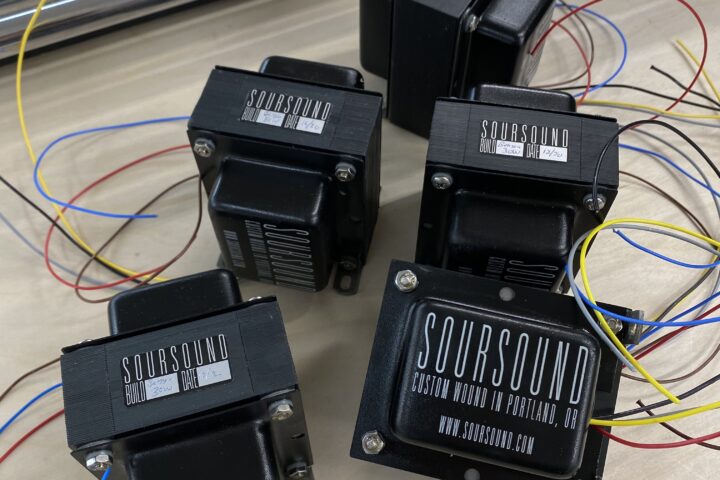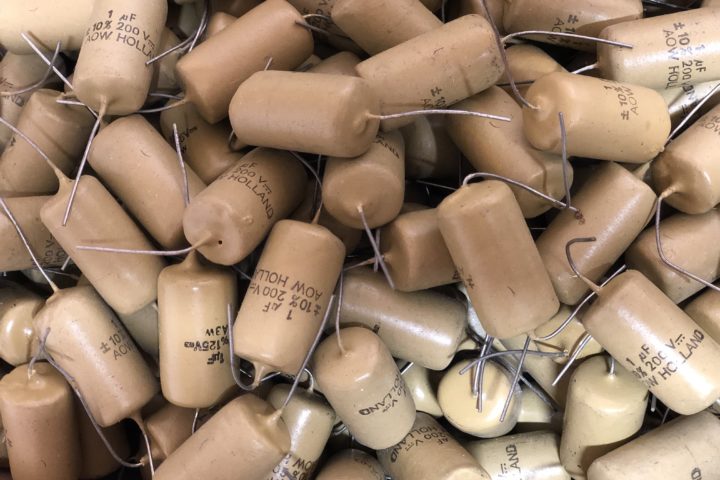For this week’s Bench Press, we called Mike Kennedy of Indian Hill Guitars in Quebec. Kennedy received his first guitar while studying to be a mechanical engineer at Cornell University. After graduating and spending time in California (where he honed his surf and guitar chops), Kennedy began apprenticing for the legendary Sergei de Jonge. That apprenticeship stretched for three years. Kennedy has great respect for the places his tonewoods come from and, with each guitar sale, he makes a generous donation to Taking Root, a sustainable forestation organization.
Fretboard Journal: What’s on your work bench?
Mike Kennedy: Right now I’m working on a guitar for the Healdsburg guitar show. It’s a presentation model so it’s got a lot of extras on it, but the main things are an elevated neck, it’s a 00, 12-fret and it has a soundport with a slothead. The whole guitar has an art deco theme to it.
I got inspired this past December when I was out in Arizona for a few weeks. I went to Taliesin West, which was one of Frank Lloyd Wright’s schools and workshops. Looking around there, I saw window screens, chairs and ornamental things that have these really nice lines. I saw those and thought that would be really neat to incorporate somehow into a guitar. I started to draw some things out and I realized I also really like the Art Deco style.
I started with a curly maple back and did a maple and Indian rosewood inlay on the back. Then I went from there. As I kept going around the guitar, I didn’t have a fully thought out plan. I like to just go for it and get started and see what develops as I build. It’s fun for me as well because, in my head, I know I have to do something for the rosette but I don’t really know what it is yet. It’s fun to see what develops.
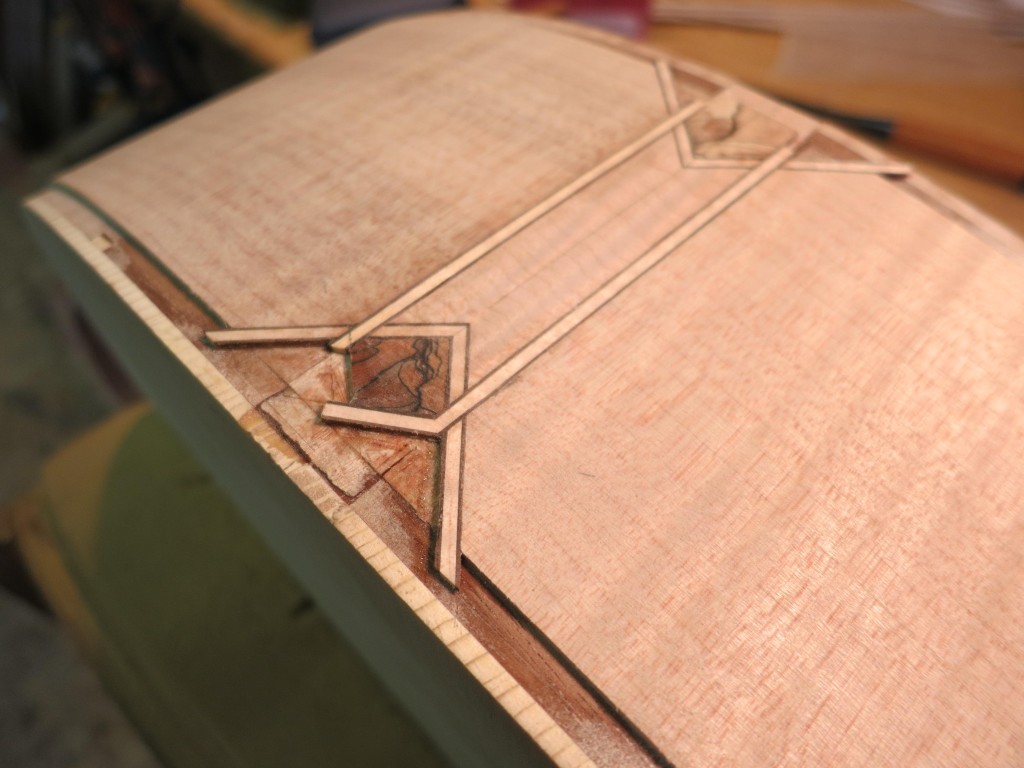 FJ: Can you tell us about where else you’re incorporating the Deco theme?
FJ: Can you tell us about where else you’re incorporating the Deco theme?
MK: There’s one inlay on the back that’s pretty linear. It’s also quite simple – just maple and Indian rosewood. I like the idea of wood on wood. Then there’s a rosette that has a similar theme, kind of like an old radio, where there are four lines going around in a circle with some other circles inlayed in them. That was the next step. Then I did something in the end wedge that was quite a challenge because I had to think more about the order of how I was going to do things. That section was also small enough that it all had to be cut by hand so that was basically done using knives and chisels, just drawing out straight lines and being very careful.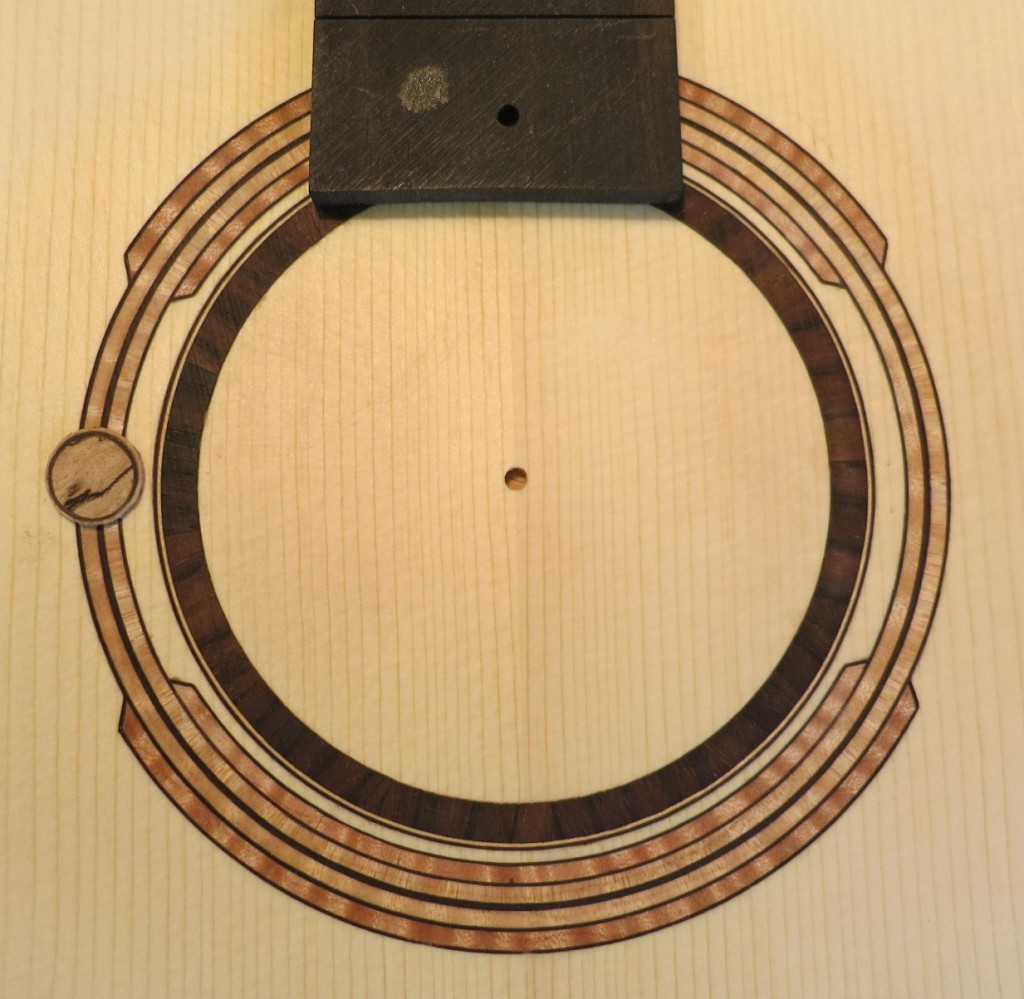
FJ: Why did you choose curly maple for the back? It seems to be in stark contrast to the linear concepts of Art Deco.
MK: I was thinking of older guitars from that era. I was debating at first whether or not I wanted to do a sunburst, so I thought it would just be nice to have the feel of curly maple because it seemed to fit in my mind of that era. For whatever reason I have that association. Also, when you are inlaying the curly parts versus the side grain or end grain or whatever you can get some nice distinct differences. Something like Indian rosewood, no matter which way you turn it, it’s all going to look somewhat similar color wise. But with maple you can really get some nice subtle contrasts.
FJ: So what kind of finish is going on it?
MK: First, I actually treated the maple with something that one of my shop mates, Jeremy Clark, researched and came up with. He calls it the Magic Old Juice. It’s something that violinmakers used to use. It’s like burning the wood – it helps age it prematurely. First, I treated most of the maple with that. It really gives it a nice golden brown color. I painted it on by hand and was careful not to touch any of the inlayed sections because I wanted to get some more contrast.
I French polish all of my guitars, so that’s how I’ve been finishing it. That’s really what I’ve been working on most of the past week or two.
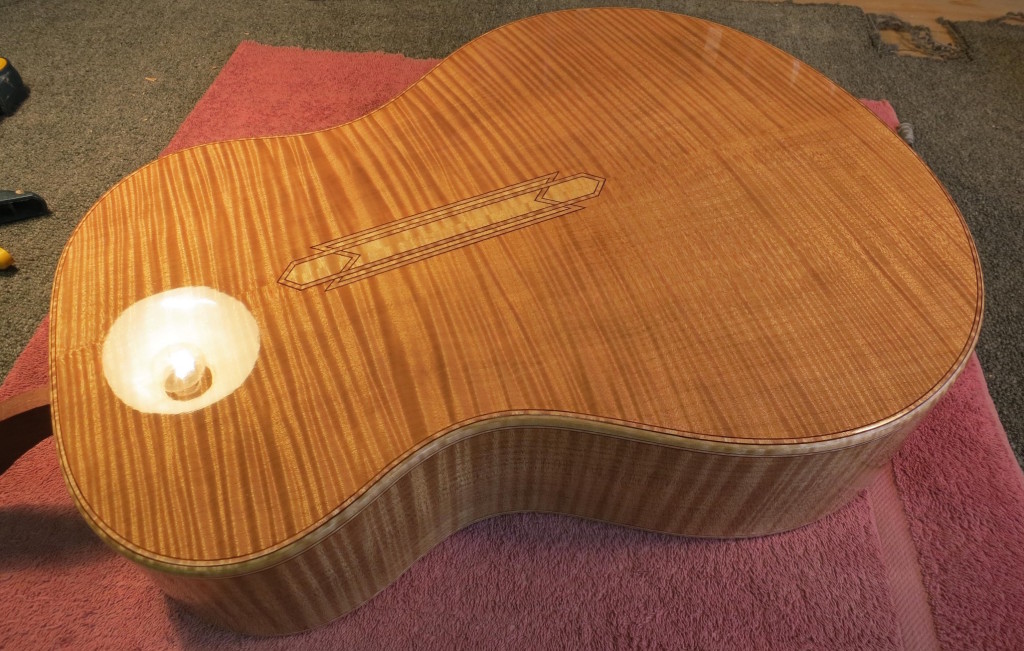 FJ: So, what’s in the Magic Old Juice?
FJ: So, what’s in the Magic Old Juice?
MK: It’s neat because it’s not like you just put it on and then that’s it. As it is exposed to UV, the color actually continues to develop. I was out of town last week and had the guitar hanging in the window so it was exciting to come back and see in just the past week that it has developed more color.
FJ: Will the color continue to change?
MK: I think so. It’s probably going to slow down quite a bit. It’s kind of like any wood will continue to develop as it continues to oxidize. This one kind of has a jump start so it will continue to develop this golden brown color.
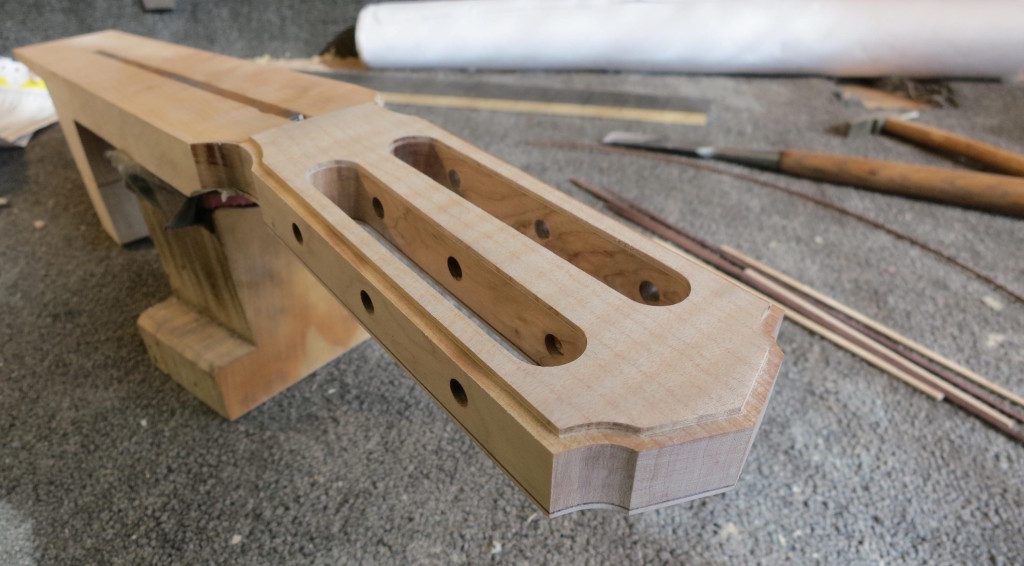 FJ: Does this guitar have a future home yet?
FJ: Does this guitar have a future home yet?
MK: Nope, it’s just going to the Healdsburg show. Hopefully, it will have a home in a month or so!
